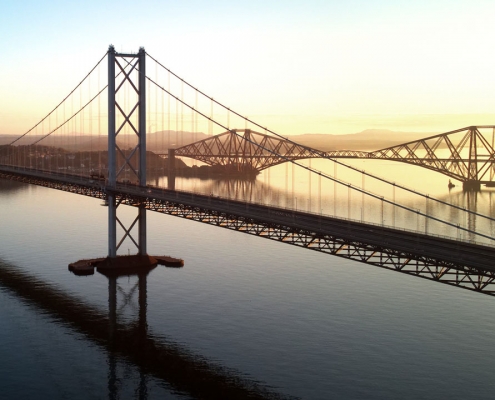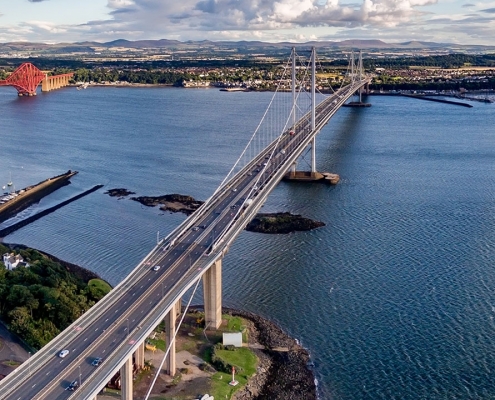Forth Road Bridge.
Edinburgh,
Scotland
The Forth Road Bridge crosses the Firth of Forth some 15 km west of Edinburgh, the capital city of Scotland. The suspension bridge features a main span of 1006 meters and two side spans, each 408 meters long. Construction of the Forth Bridge began in 1958 and it was opened to traffic on 4 September 1964 and over 25 million vehicles now cross each year. The bridge deck supports a dual two-lane carriageway without hard shoulders or strips and there is a separate footway/cycle-track on either side. Each main cable consists of 11,618 parallel high tensile galvanized steel wires. The specified diameter of the cable wires was 4.98mm over the galvanizing with a minimum tensile strength of 100 tons per square inch (1544N/mm2). The cables are wrapped with 3.7mm diameter mild steel galvanized wire, laid in a pair over a layer of red lead paste applied to the outer cable wires.
BTC Scope:
• BTC has been commissioned to carry out consultancy services for the 2017 internal inspection of the main suspension cables of the Forth Road Bridge. The scope of BTC’s consultancy work is to apply the BTC method to assess the remaining strength of the main suspension cables. The work for this fourth inspection of the cable includes inspection of panel openings, extracting wire samples from opened panels, testing of sampled wires and strength evaluation of the main suspension cables, based on inspection and testing results, utilizing the BTC method.
• BTC provided the wire sampling plan.
• Evaluation of remaining cable strength and residual life of cables, based on BTC method.
• In 2012, the Forth Estuary Transport Authority (FETA) commissioned BTC to carry out consultancy work associated with the 2012 internal inspection of the main cables of the Forth Road Bridge. The purpose of the consultancy work is to apply the BTC method to assess the remaining strength and remaining service life of the main suspension cables, based on the 2012 inspection findings and wire samples test results.






